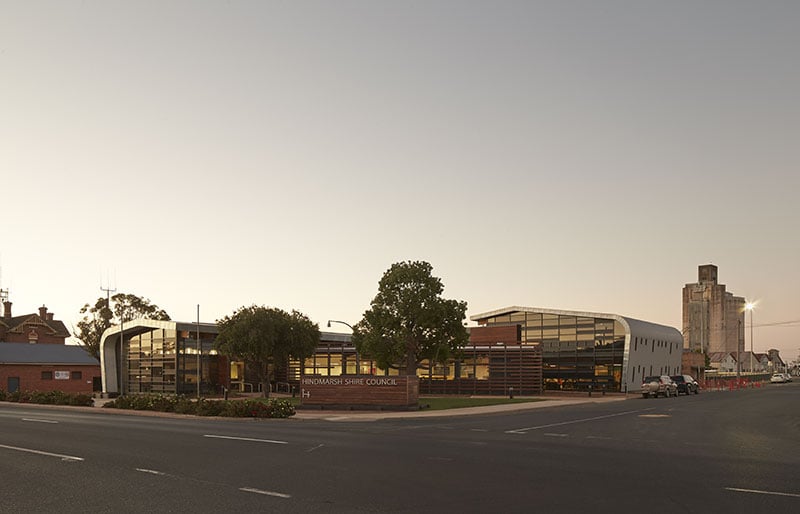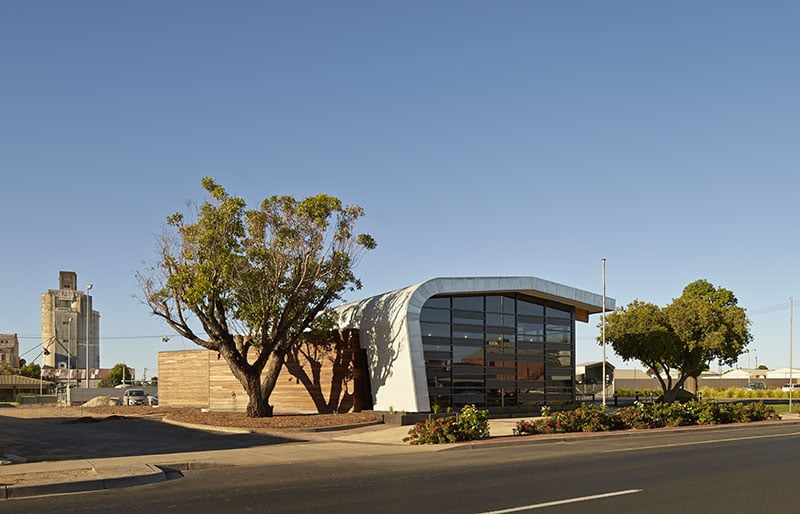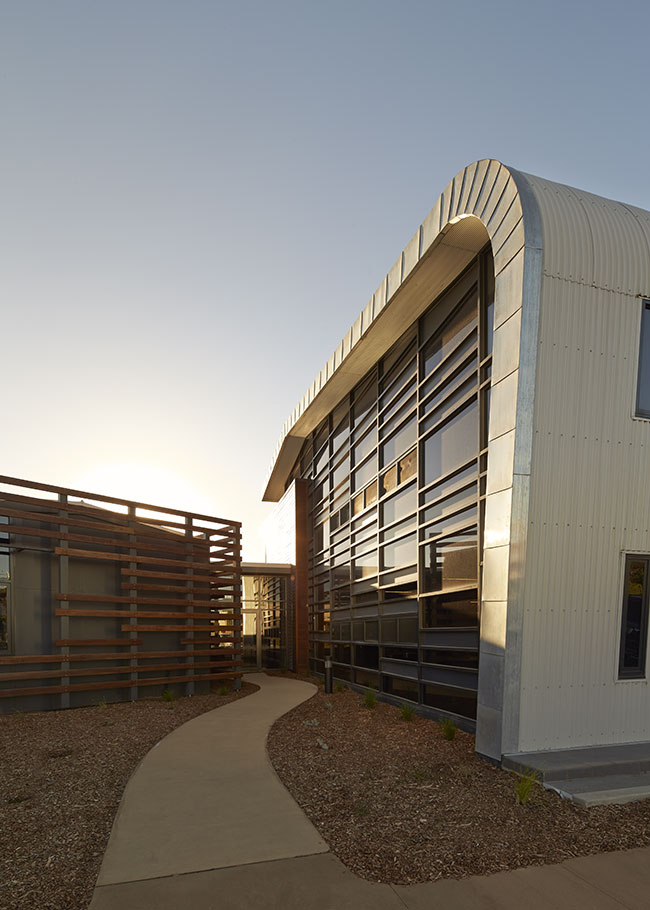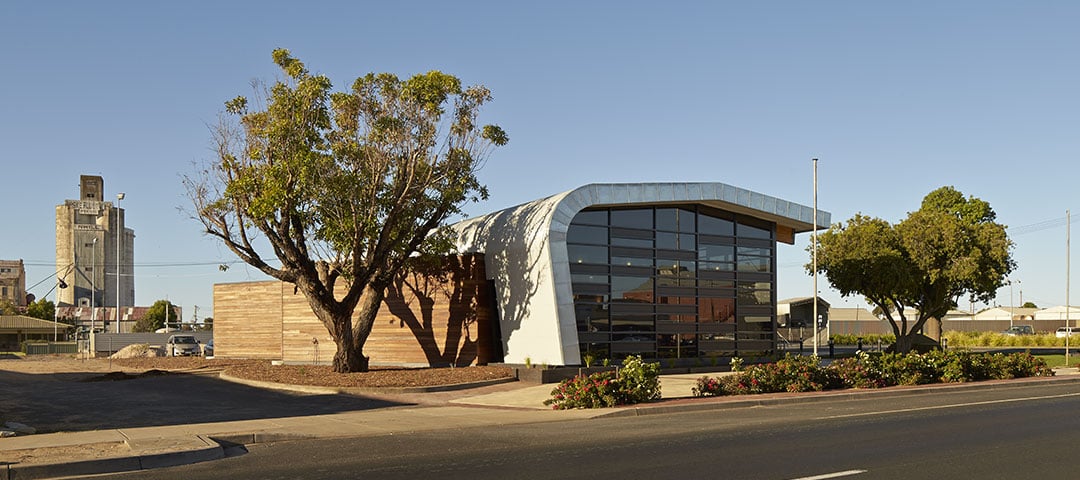
Located in the rural setting of Nhill, Victoria, Hindmarsh Shire Council Corporate Offices is a technologically advanced Corporate Civic and Administration Centre with Environmentally Sustainable Design (ESD) principles at the core of the building’s design intent.

Completed in 2014 the precinct re-uses the existing 1960’s building and encapsulates it within its new contemporary built form. The building was inspired by the town’s identity as a hub of wheat production with steel storage silos and agricultural sheds dotting the landscape. The centre’s form and restrained material palette of timber, steel and glass gives subtle references to the local agricultural context; utilising the craftsmanship of the folded metal inherent in the silos in the form of locally sourced steel and zinc finishes along the building’s exterior.

The project is the development of Hindmarsh Shire Council’s new corporate offices and Civic Centre, accommodating 70 staff with expansion capability for up to 100. Although double the size of the building it replaces, the facility uses 60 per cent less electricity.
With a 5-hour drive to the nearest capital city, the remote rural setting and harsh climatic conditions were intrinsically linked to the design as well as the development of sustainable design innovations. By constructing a series of thermal chambers underground via earth tubes and under-floor ventilation plenums, fresh air is drawn in from the exterior and cooled (or warmed) naturally by the earth before being redistributed back throughout the building via plenums and air displacement floor grilles.

The Hindmarsh approach pre-tempers the air via an earth pipe heat exchange system before it is introduced into the habitable areas of the building, thus greatly reducing the energy required to heat or cool the air once inside the space. An advantage of this system is that the building’s mechanical system delivers elevated levels of fresh air supply at greatly reduced energy consumption.
Studies show increasing fresh air supply is a major contributor to enhancing internal work environments feeling of wellness thereby increasing productivity. An under-floor air distribution (UFAD) air conditioning system was then designed to provide an excellent level of control for occupants via a series of operable floor grilles. Placing the grilles on the floor of the building levels, rather than along the ceiling as is customary with traditional air conditioning systems, enables the fresh air supply to be delivered closest to the occupied space, thus delivering the highest level of health benefits. A further additional benefit with the air displacement system is that it further reduces the heating and cooling load of the entire system.

With air quality addressed, LED lighting systems were selected for reduced energy consumption and maintenance within the main workspaces, and solar panels were installed on the roof to harvest energy to offset energy consumption.
Very little steel was used in the building’s design but instead k20 Architecture custom designed and manufactured a laminated timber product from locally sustainably sourced Vic Ash timber to replace steel for structural purposes without the associated environmental consequences.

The building also consumes less energy via passive solar design, cross-flow ventilation principles and zoned motion-detecting. An electronic control and monitoring system has been installed to test the effectiveness of the measures taken to minimise energy consumption, so that the positive impact of the building’s systems can be measured and documented over time, and where the results are most effective, they can even better inform decisions about building systems in the future. These statistics are displayed in the entry foyer showing the buildings visitors and community the buildings performance and the benefits of the sustainable initiatives adopted by the building.

Other sustainable features incorporated in the facility include LED lighting systems throughout; solar panels; zoned mechanical system; passive solar design, cross-flow ventilation and zoned motion-detection lighting. Coupled with the cutting edge design, these sustainable elements result in a facility that it is double the size of the building it replaced, yet it uses 60 percent less electricity with the capacity to go “off grid” with further funding in the future.
k20 Architecture utilised a number of innovations to deliver an outcome that would not only minimise embodied energy and energy loadings within the building, but also reduce carbon output for the life of the project and provide an enhanced internal environment for its inhabitants.
Project Details:
Location: Victoria, Australia
Architects: k20 Architecture



